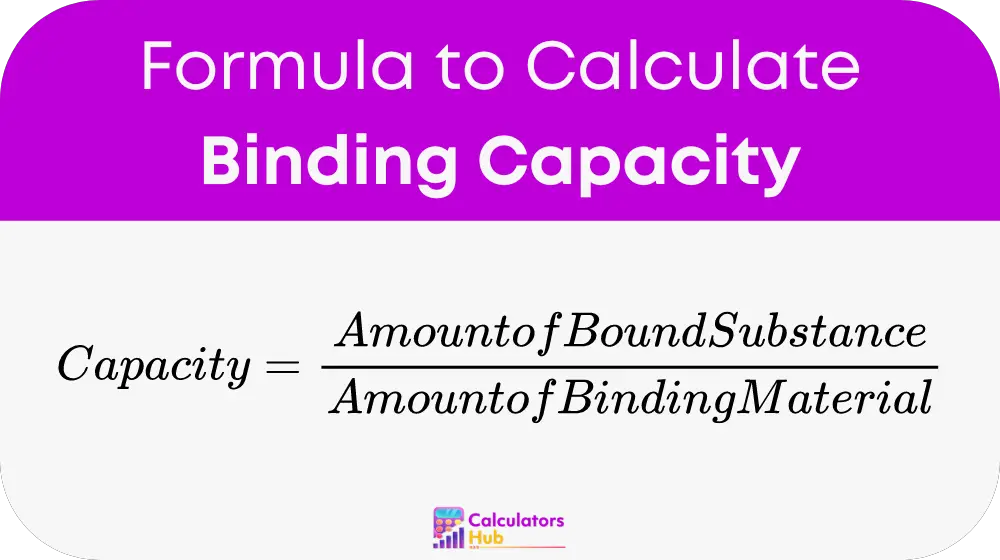The Binding Capacity Calculator is a tool used primarily in biochemical and molecular biology research to determine the efficiency of binding interactions between a substance and a binding material. This calculator is essential for optimizing experiments and processes where the binding capacity is critical, such as in protein purification, antibody-antigen interactions, or drug-binding studies. By accurately calculating binding capacity, researchers can ensure they are using the optimal amount of binding material, reducing waste and improving the efficiency of their experiments.
Formula of Binding Capacity Calculator
The formula used to calculate binding capacity is:

Where:
- Amount of Bound Substance: The quantity of the substance that has been successfully bound, typically measured in moles, grams, or micrograms.
- Amount of Binding Material: The quantity of the material used to bind the substance, often measured in the same units as the bound substance (e.g., per gram of resin or per microgram of antibody).
This formula provides a straightforward way to measure how much of a substance can be bound by a given amount of binding material, which is critical for optimizing experimental conditions.
General Reference Values
Here’s a table that provides general reference values for different binding interactions. These values can help researchers quickly estimate binding capacity without needing to perform the calculation each time.
| Binding Interaction | Amount of Bound Substance | Amount of Binding Material | Binding Capacity |
|---|---|---|---|
| Protein to Resin | 2 mg | 1 g | 2 mg/g |
| Antibody to Antigen | 0.5 μg | 1 μg | 0.5 μg/μg |
| Drug to Carrier Molecule | 10 mmol | 1 g | 10 mmol/g |
These values provide a quick reference for common binding interactions, aiding in the design and optimization of experiments.
Example of Binding Capacity Calculator
Let’s walk through an example to see how the Binding Capacity Calculator works in practice.
Scenario:
You are conducting an experiment to purify a protein using a resin. You start with 5 grams of resin and after the binding process, you find that 8 milligrams of protein have been bound.
Calculation:
Using the formula for binding capacity:
Binding Capacity = (Amount of Bound Substance) / (Amount of Binding Material)
Binding Capacity = 8 mg / 5 g
Capacity = 1.6 mg/g
This means that the binding capacity of your resin for this particular protein is 1.6 mg of protein per gram of resin.
Most Common FAQs
Binding capacity is crucial because it determines how efficiently a binding material can capture and hold a substance. Understanding this capacity helps in optimizing the amount of material used, reducing waste. Ensuring that experiments are cost-effective and efficient.
Yes, the calculator can be use for a wide range of binding interactions, including protein-resin, antibody-antigen, and drug-binding studies. The key is to ensure that the units of measurement for the bound substance and the binding material are consistent.
Improving binding capacity can involve several strategies, such as increasing the affinity of the binding material for the substance. Optimizing the concentration of the substance, or adjusting the environmental conditions (e.g., pH, temperature) to favor binding.